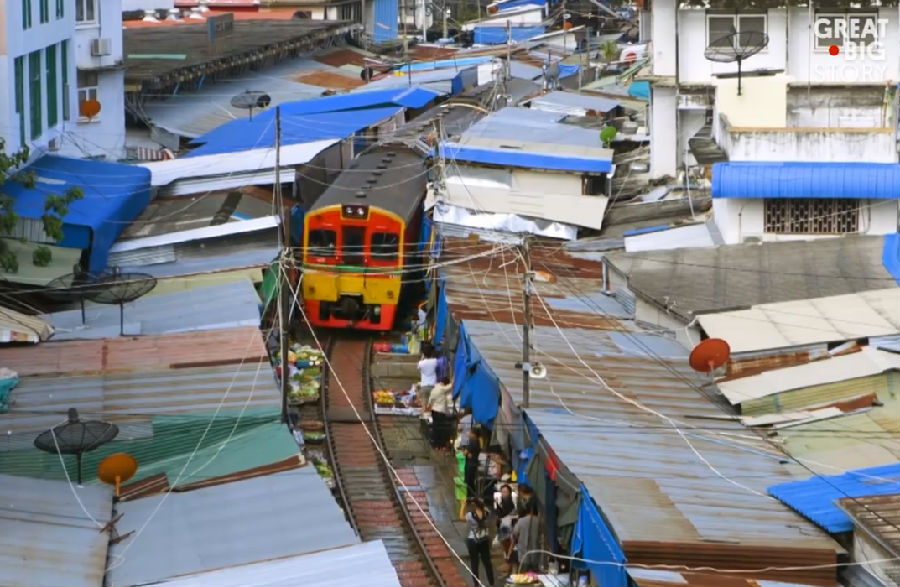Okay, just watch. Three, two, one.
大家看好了。三、二、一。
This is Thailand's Maeklong Market.
这里是泰国美功铁道市场。
About an hour south of Bangkok, every day beginning at 6:20 in the morning,
从曼谷市中心往南大约走一个小时,从早上6:20开始,
a train runs through Maeklong Railway Market,
每天都会有一列火车穿过美功铁道市场
one of the largest produce and seafood markets in Thailand,
该市场是泰国最大的蔬菜和水产市场
through the stalls selling fruit, ice cream, fish, through everything.
穿行在水果、冰淇淋、鱼等琳琅满目的摊位间,
And if you're wondering which came first, the market or the train, the answer is the market.
思索是先有市场还是先有火车的话,答案是先有市场

The Maeklong Railway built a commuter train to Bangkok back in 1905.
早在1905年,美功铁道市场就修了一列前往曼谷的通勤铁路。
The track they laid ran right through the middle of this market, which had been around for decades.
铁轨就铺在市场中间,此前市场就已经开设了好几十年。
Rather than moving, the vendors stayed put, adjusting their business to the train times,
摊贩们没有选择离开,而是留了下来,并按照火车通过的时间调整他们的生意
eight times a day, seven days a week.
一天八次,一周七天
This system has been perfected over the years.
这些年来,火车和市场一直秩序井然
With produce just inches from the train's wheels,
农产品离火车的车轮相差仅数英寸
tourists and vendors wait as the train passes through.
游客和摊贩都会停下来等待火车通过
Then, everything goes back to normal, or at least as normal as an active train line market can be.
火车过去,一切恢复原样,至少是恢复到了一个火车频繁通过的市场平时的样子












